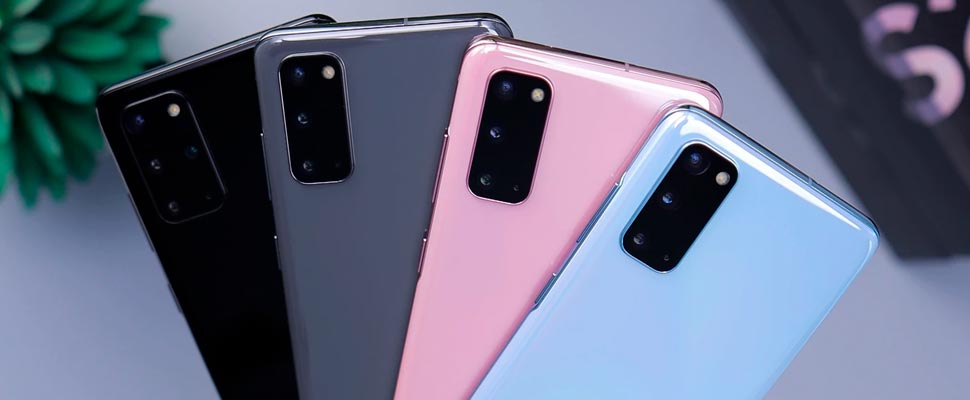3 “cheap” good alternatives of smartphones with 5G
Large screens, powerful processors and even 5G signal, offer these great brands of smartphones in their most affordable versions of the most expensive brands.

What do these brands offer in their high-end “cheap” versions? Photo: Unsplash
LatinAmerican Post | Juan Manuel Bacallado Gómez
Listen to this article
Leer en español: 3 versiones “económicas” de smartphones gama alta con 5G
Nowadays we could not talk about smartphones without naming the big Asian brands such as Samsung, Huawei and Xiaomi , which despite the pandemic, and the blow that the entire smartphone market received, they became the manufacturers with the most smartphones sold worldwide during the third quarter of 2020. Samsung ranked first with 22% of the market share, Huawei second with 14% and Xiaomi surprisingly surpassed Apple with 13%, according to Xataka Móvil .
New and with 5G
Llego el Galaxy S20 FE a la región https://t.co/eRZdldNMiL pic.twitter.com/5BEVHPxnDM
— Tgustahn (@tgustahn) November 7, 2020
Huawei P40 Lite 5G es oficial: la versión "vitaminada" con cámara de 64 MP y 5G https://t.co/mzmS2zky4V pic.twitter.com/nLVwMW2QxX
— El Grupo Informático (@EGInformatico) May 15, 2020
Chollo Xiaomi Mi 10 Lite 5G Full HD+ de 6,57" 6 GB RAM + 128 GB ROM por sólo 271,39€ con envío gratis (-45%) https://t.co/b5iVsDDQVI pic.twitter.com/OtmqefdGDn
— SoloOfertas (@SoloOfertasyMas) November 10, 2020
What do these brands offer in their “cheap” versions? Well, in its most recent models, Samsung has presented a new edition of the Galaxy S20 under the name of "Fan Edition", the Galaxy S20 FE announced in September 2020. For its part, Huawei, as is tradition, included the version Lite in its latest P40 model presented in May 2020 . Finally, Xiaomi, which also incorporated a Lite model in its range of Mi 10 announced in March, according to data from PhoneArena . Another highlight is that they all have 5G network capability, which was previously only available on more expensive smartphones.
Displays
Análisis de la pantalla del Galaxy S20 FE 5G, una de sus armas secretas https://t.co/8V4gbooaFe pic.twitter.com/yGJa7xUHK6
— AppleZoneros (@applezoneros) October 27, 2020
The Samsung Galaxy S20 FE incorporates a 6.5-inch screen with a Full HD + resolution of 2400x1080p in a Super Amoled panel capable of reaching 120 Hz, this means greater fluidity in the image, since it is capable of updating 120 times per second, when the standard in smartphones is 60Hz. However, the higher the amount of Hz, the higher the battery consumption, so there is the possibility of adjusting it to 60Hz . Likewise, this screen is capable of HDR10 image, according to CNET.
The Huawei P40 Lite has 6.5 inches of Full HD + resolution , although in this case it has an LCD panel that offers more opaque color, in addition to having the standard refresh rate of 60Hz, although it does have HDR10 support according to Xataka.
The Xiaomi Mi 10 Lite offers a 6.57-inch Amoled and Full HD + resolution with HDR10 + and 60Hz capacity , this model is the only one among the three that is protected with Corning Gorilla Glass 5.
Processor and capacity
Samsung adds a Qualcomm Snapdragon 865 with 8 cores at 2840 MHz. In terms of RAM, the Korean company's model has 6GB and internal storage starting at 128GB with UFS 3.1 capacity. For its part, Huawei continues to use its own processors with the HiSilicon Kirin 820 with 8 cores at 2360MHz , its RAM memory is 6GB and the internal memory is 128GB UFS 2.1. Xiaomi also relies on Qualcomm Snapdragon, so its processor is a 765G 8-core at 2400MHz, the RAM is the same as the others with 6GB of capacity, although its internal storage is less with 64GB UFS 2.1, according to PhoneArena.
Cameras
Xiaomi Mi 10 Lite 5G llega a España: 5G y cámara cuádruple a precio ajustado https://t.co/jtSaUvbjTM pic.twitter.com/iYA06ZVmCY
— El Grupo Informático (@EGInformatico) May 26, 2020
They never disappoint here. Huawei and Xiaomi have four cameras that, despite having different specifications, serve the same purpose: main camera, ultra-angle, depth sensor and a macro lens. This last lens is not offered by Samsung in its triple camera, the three models can record at 4K resolution although only the Galaxy does it at 60 fps, in lower resolutions, Samsung allows slow motion recording at 240fps and 960fps, Xiaomi also achieves it at 120 fps, while Huawei does not have that option. For the front camera, all three have HDR capability and Full HD recording , Samsung can also record at 4K with this camera.
Battery and charging
Samsung includes a 4500 mAh battery that, according to Xataka, can last approximately 7 hours with the screen active at 60Hz and one hour less if it is used at 120Hz , it has fast charging and a 15W charger that recharges the phone from 0 to 100 in about 100 minutes, it also allows wireless charging and reverse charging just like Huawei.
The Huawei comes with 4000 mAh that seems to offer 6 hours of autonomy according to Engadget , in this case Huawei includes the most powerful super fast charging charger with 25.5W that in 1 hour of charging goes from 0 to 100%, it is also compatible with the super fast charge of 40W in case of acquiring the Huawei charger of that power according to CNET.
It may interest you: Do not suffer more when you choose your smartphone: follow these simple tips
Finally, the Xiaomi incorporates 4160 mAh that allow a duration of 10 hours of active screen , this makes it the model among the three with the greatest autonomy. Its fast charge is 20W that goes from 0 to 100 in approximately 2 hours, according to Xataka, in this case it does not have wireless or reverse charging.
Additional features
Samsung is the only one without a headphone jack, but with Dolby Atmos audio and two speakers while the rest have a single speaker. As for resistance against dust and water, only Samsung brings IP68 protection, all have dual Nano SIM card capacity.
Price
Although the Samsung Galaxy FE is the most expensive model since it starts at $ 549 on Amazon in the United States , the Huawei P40 Lite has the disadvantage of not having, for now, many Google applications due to US sanctions, but in the same way it incorporates Android and its price is 420 dollars . While the Xiaomi Mi 10 Lite is offered at an estimated cost of $ 410 .




